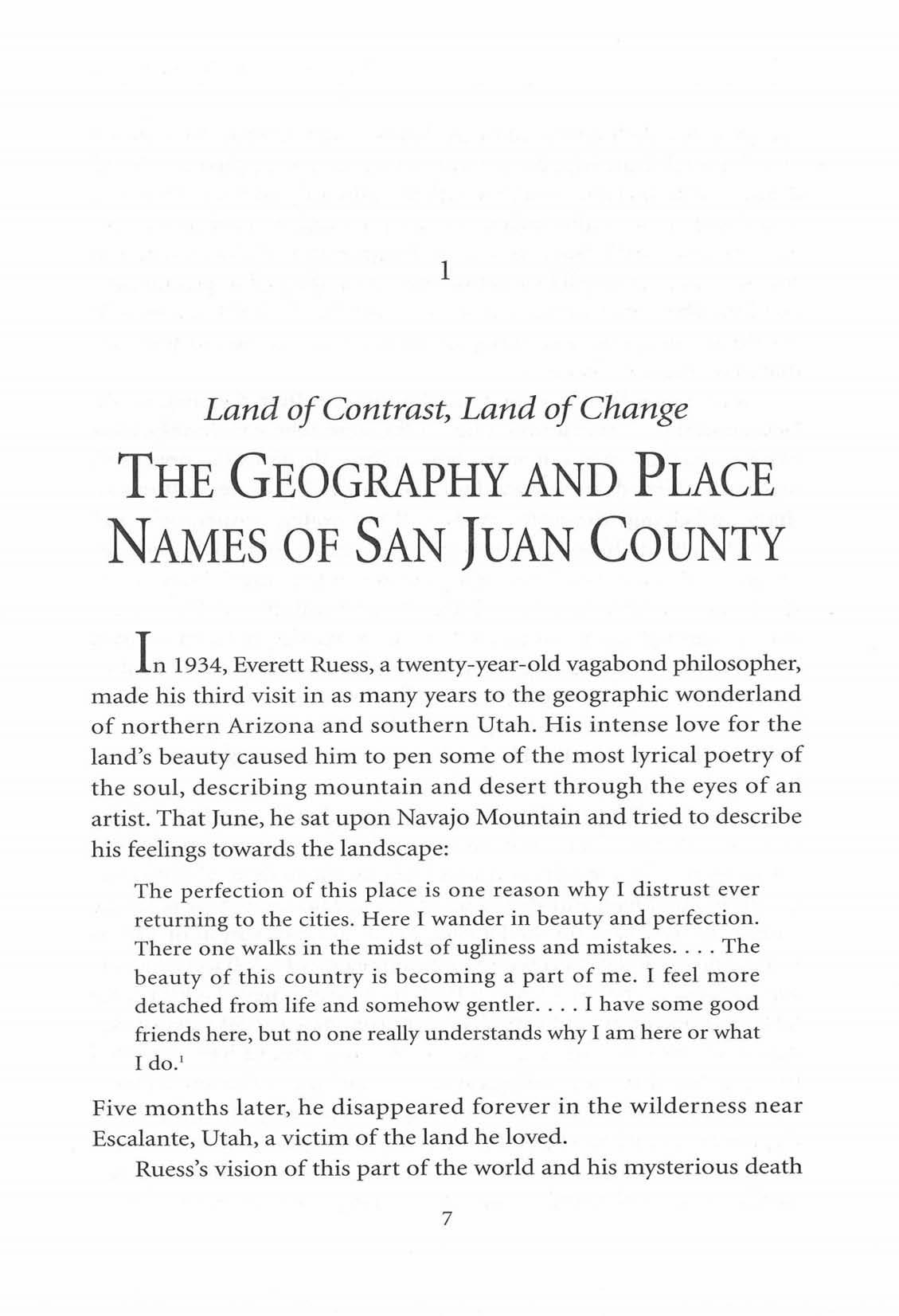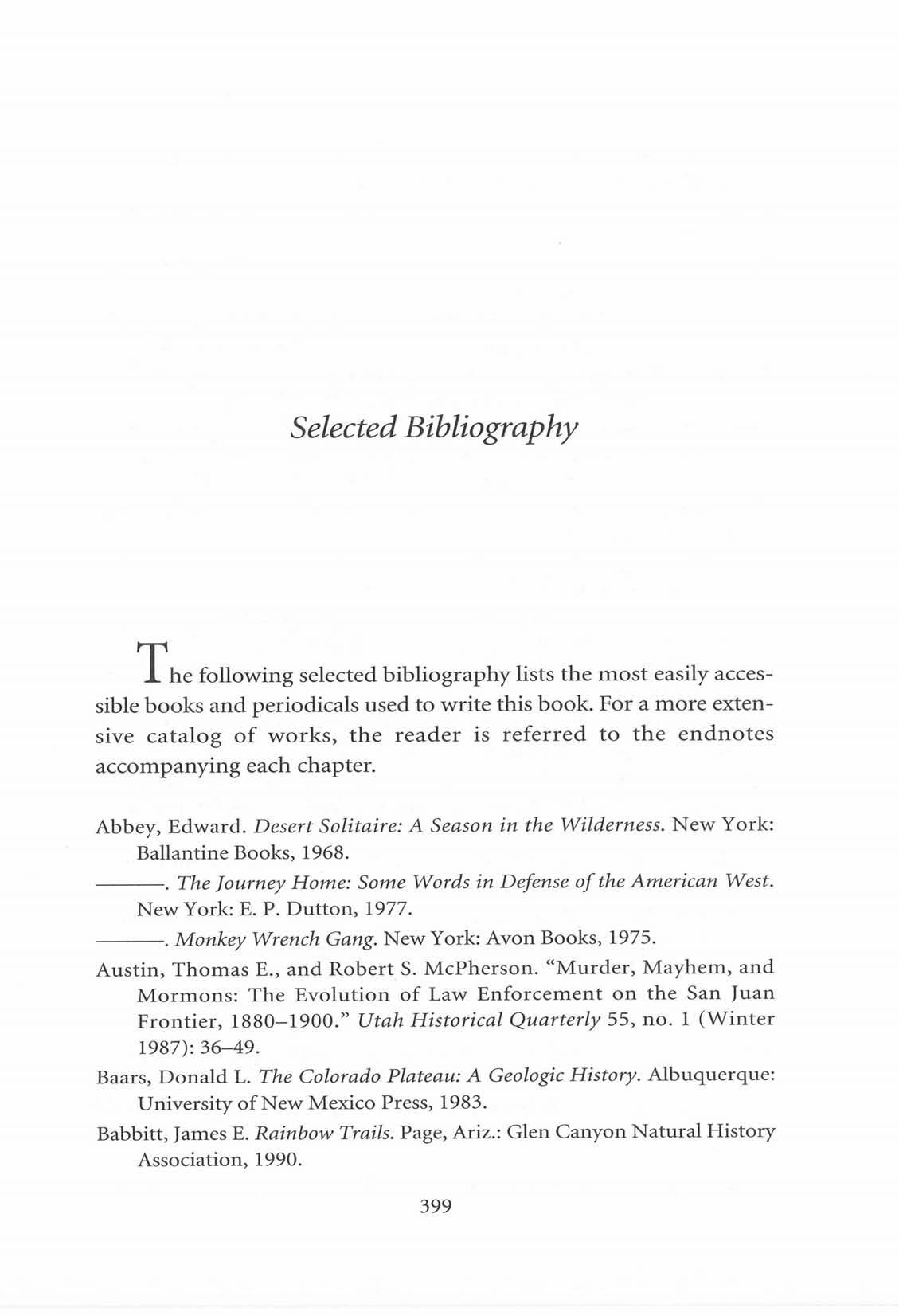Utes, Paiutes, and Navajos Come to San Juan
SETTINGTHE FOUNDATION, U.S.
According to the 1990 census, over half the population of San Juan County is now Native American. Their burgeoning numbers indicate not only better health care, greater statistical accuracy, and more abundant personal resources but also older, historic trends of mobility and expansion. Indeed, in a little more than one hundred years, there have been four major additions of land to the Navajo Reservation in San Juan County. This chapter is concerned with the entrance into the county of the three historic tribes-Ute, Paiute, and Navajo-and some of the early reports of their activity in this area until around 1880, at which time major Anglo-American expansion in the region began. Close to the time of Anasazi abandonment of the Four Corners region (roughly the year 1300), there arrived a new group of Native Americans who were Numic speakers. Where these Native Americans came from is still open to anthropological debate. Most scholars agree that the initial homeland of Uto-Aztecan speakers was in the area of Death Valley in southern California. Approximately 3,000 to 5,000 years ago this large Native American language family started to





















